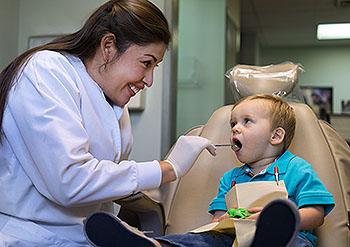Taking your child to the dentist can be an overwhelming experience, especially for first-time parents. When it comes to specialized dental care, visiting a pedodontist Thousand Oaks CA—a dentist trained specifically in treating children—can make all the difference. This guide will walk you through what to expect during your child’s first visit to a pedodontist, helping you understand their role, the treatments they offer, and how it differs from orthodontics.
Understanding the Role of a Pedodontist
What is a Pedodontist?
A pedodontist (or pediatric dentist) specializes in the dental care of infants, children, and adolescents. They are equipped to handle the unique dental needs and concerns that arise during these crucial developmental stages. Unlike a general dentist, a pedodontist undergoes additional training focused on children’s behavior, growth, and development, ensuring a more tailored approach to dental care.
How Does a Pedodontist Differ from an Orthodontist?
While both pedodontists and orthodontists play vital roles in oral health, they focus on different aspects of dental care. A pedodontist focuses on preventive care, early detection of dental issues, and education, while an orthodontist specializes in diagnosing, preventing, and treating misaligned teeth and jaws. For cases requiring braces or Invisalign, a referral to an orthodontist may be necessary after initial evaluations by the pedodontist.
What to Expect During the First Visit
Preparing for the Appointment
Preparation can help ease both your and your child’s nerves. Here are some tips to make the visit smoother:
• Talk About It: Explain to your child that the pedodontist is a special doctor for teeth. Use simple, positive language to describe what will happen.
• Practice Good Oral Hygiene: Brush and floss your child’s teeth before the visit. This not only helps present a clean slate but also teaches them the importance of oral care.
• Gather Necessary Documents: Bring your child’s medical history, insurance information, and any previous dental records if available.
Arrival at the Pedodontist’s Office
Upon arrival, you’ll likely be greeted by friendly staff who are accustomed to working with children. Expect a waiting area that is colorful and welcoming, designed to make children feel comfortable.
The Initial Evaluation
• Medical and Dental History: The visit typically begins with a thorough review of your child’s medical history, any dental issues, and previous treatments.
• X-rays (if necessary): Depending on your child’s age and dental development, the pedodontist may take X-rays to assess tooth placement, growth patterns, and any underlying issues.
• Dental Examination: The pedodontist will conduct a complete examination of your child’s teeth and gums. They will check for cavities, signs of tooth decay, and developmental abnormalities.
Engaging Your Child
One of the most important aspects of a pedodontist’s practice is their ability to engage children. They often use fun and interactive methods to help children feel relaxed during the examination. For instance:
• Using Child-Friendly Language: Instead of terms like “drill” or “extraction,” they might use more comforting phrases to describe procedures.
• Involving Your Child: The pedodontist may encourage your child to ask questions or even help with the examination by counting their teeth.
Treatment Options and Recommendations
Preventive Care
After the examination, the pedodontist will provide recommendations based on your child’s specific needs. Common preventive measures include:
• Fluoride Treatments: To strengthen tooth enamel and prevent decay.
• Dental Sealants: A protective coating applied to the chewing surfaces of back teeth to prevent cavities.
Orthodontic Referrals
If the pedodontist identifies any issues related to tooth alignment or jaw development, they may refer you to an orthodontist for further evaluation. Here’s how they might approach this:
• Discussion of Treatment Options: They will explain the need for orthodontic care and discuss options like traditional braces or Invisalign.
• Early Intervention: The pedodontist may suggest an early orthodontic evaluation, which can help address alignment issues before they become more serious.
Tips for Maintaining Your Child’s Oral Health
To ensure your child maintains a healthy smile between visits, consider the following tips:
• Establish a Routine: Help your child develop good oral hygiene habits, including brushing twice a day and flossing regularly.
• Healthy Diet: Encourage a balanced diet and limit sugary snacks that can contribute to tooth decay.
• Regular Check-ups: Schedule routine dental visits every six months to catch potential issues early.
Conclusion
Visiting a pedodontist for the first time can set the stage for your child’s lifelong oral health. By understanding what to expect during the visit and engaging positively with the process, you can help alleviate any anxiety your child might have. Remember, the insights and preventive care provided by a pedodontist are invaluable as your child grows and their dental needs evolve.
Whether it’s routine check-ups or potential referrals to an orthodontist for treatments like Invisalign, establishing a relationship with a pedodontist lays a strong foundation for your child’s healthy smile. Make that first visit a positive experience, and your child will be on the path to a confident and healthy future! dental braces alternatives Thousand Oaks CA


